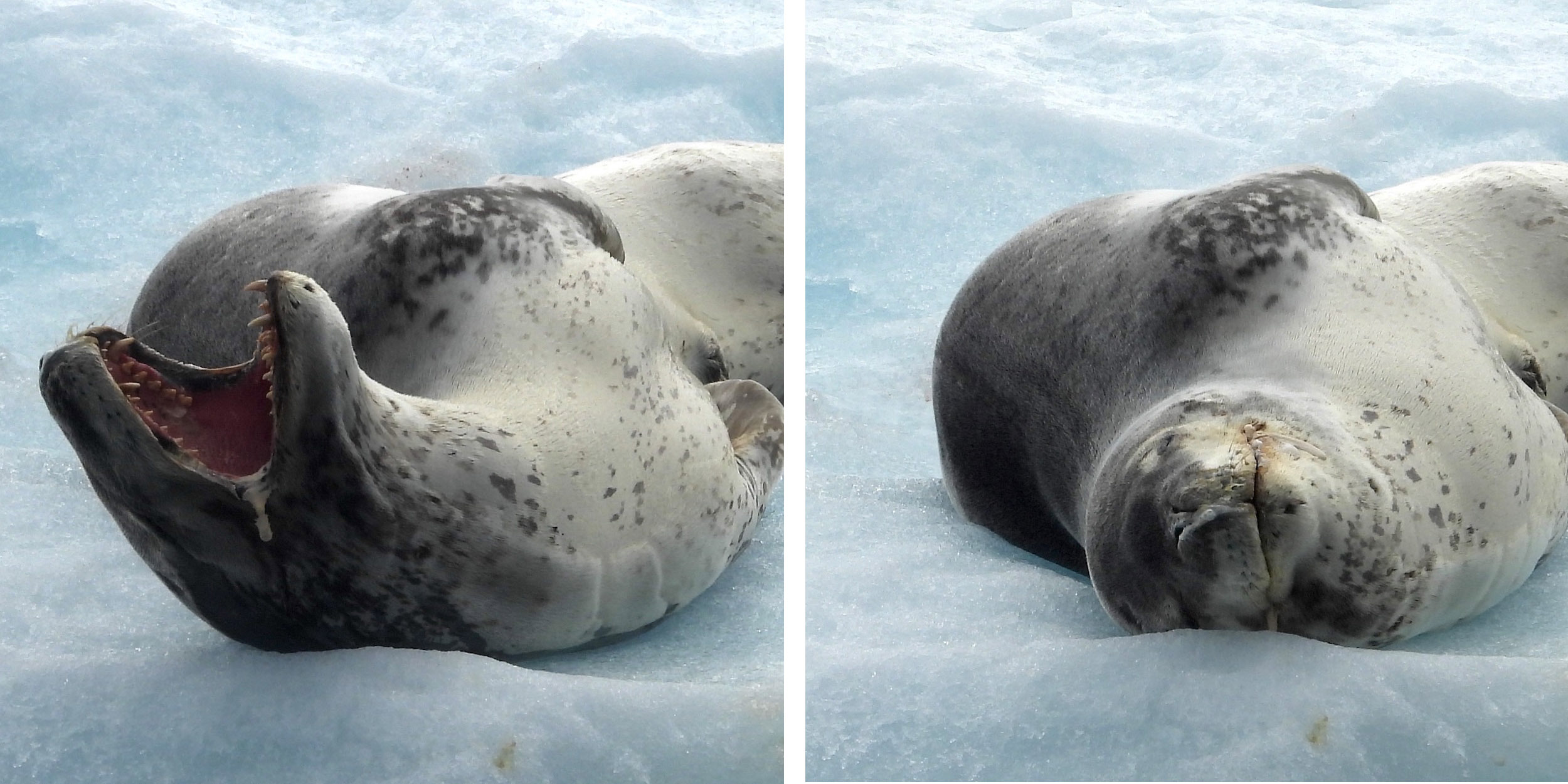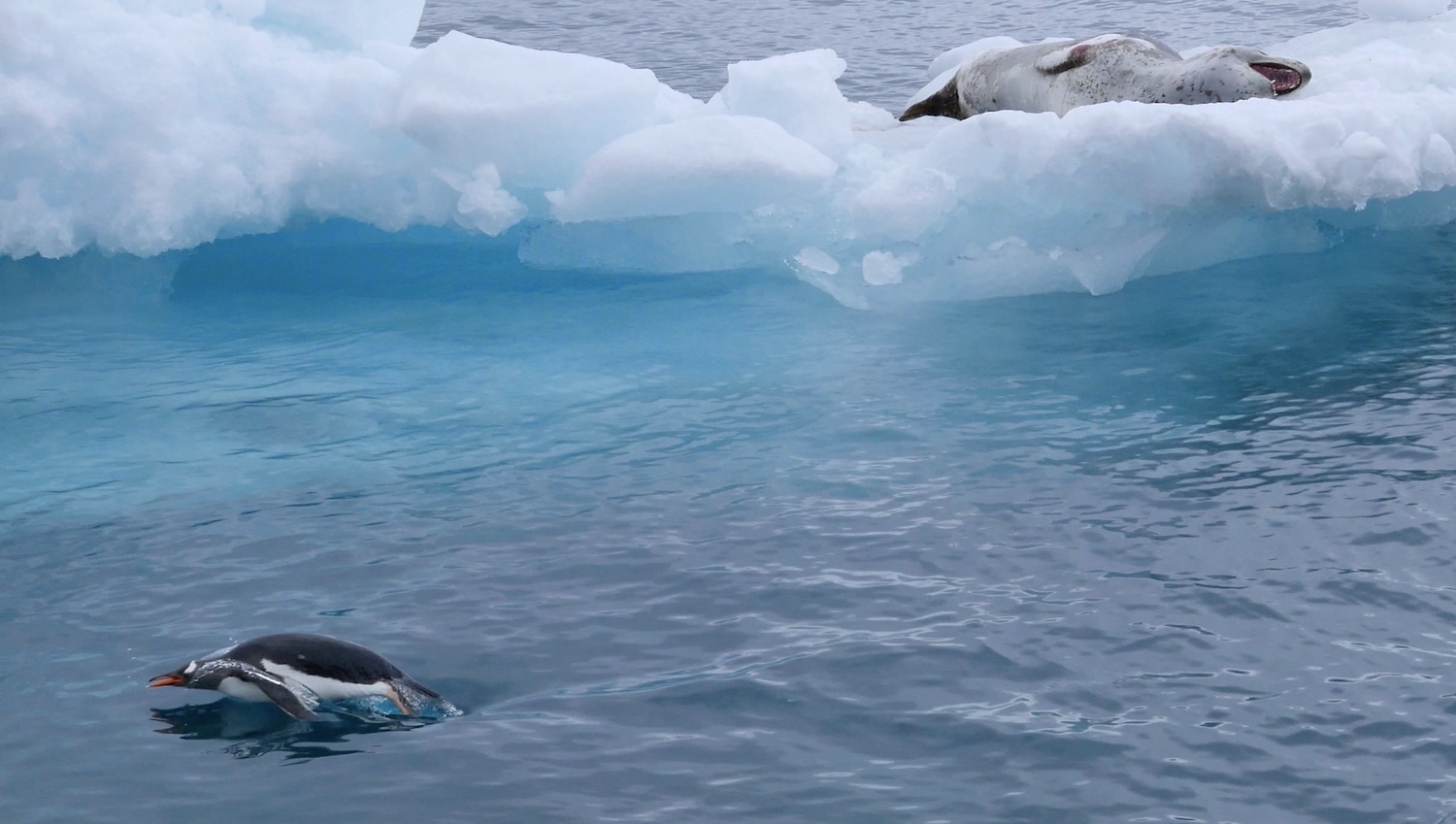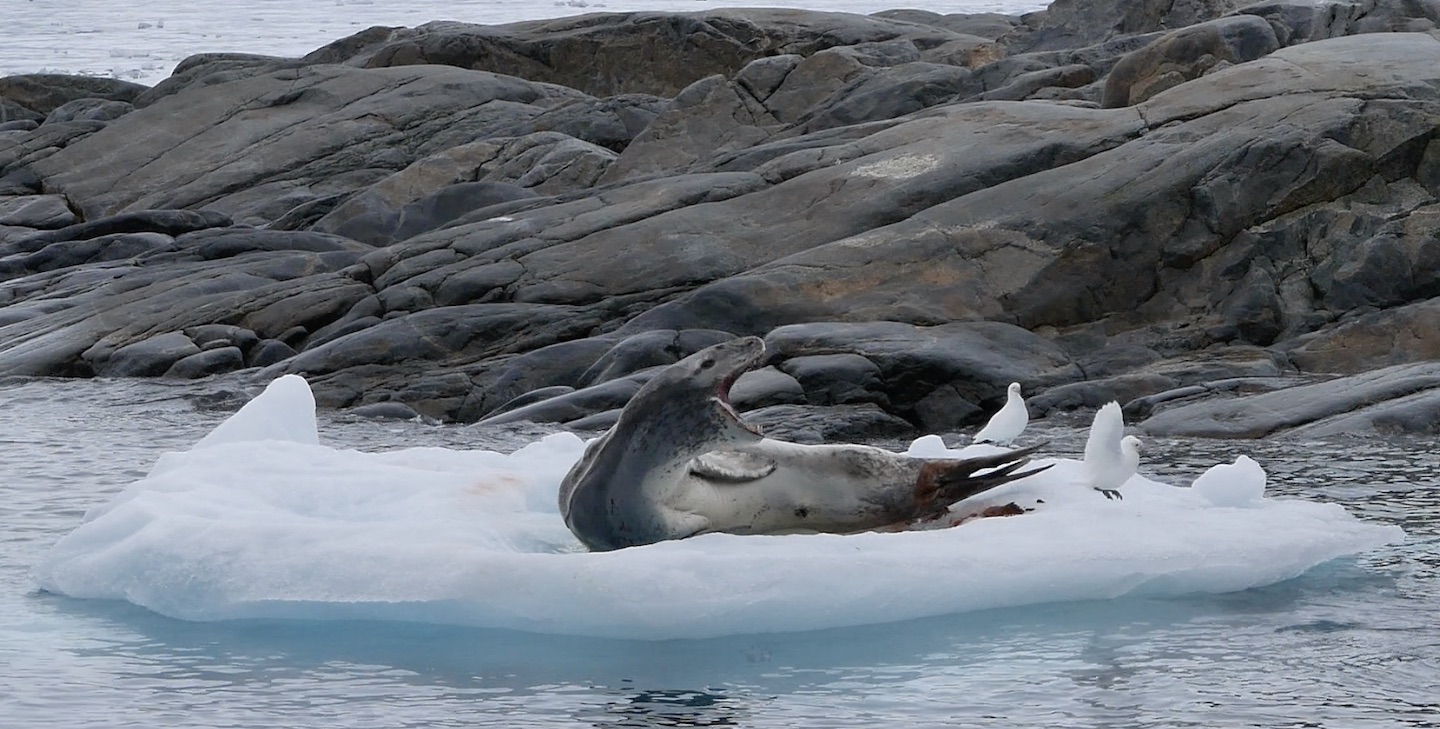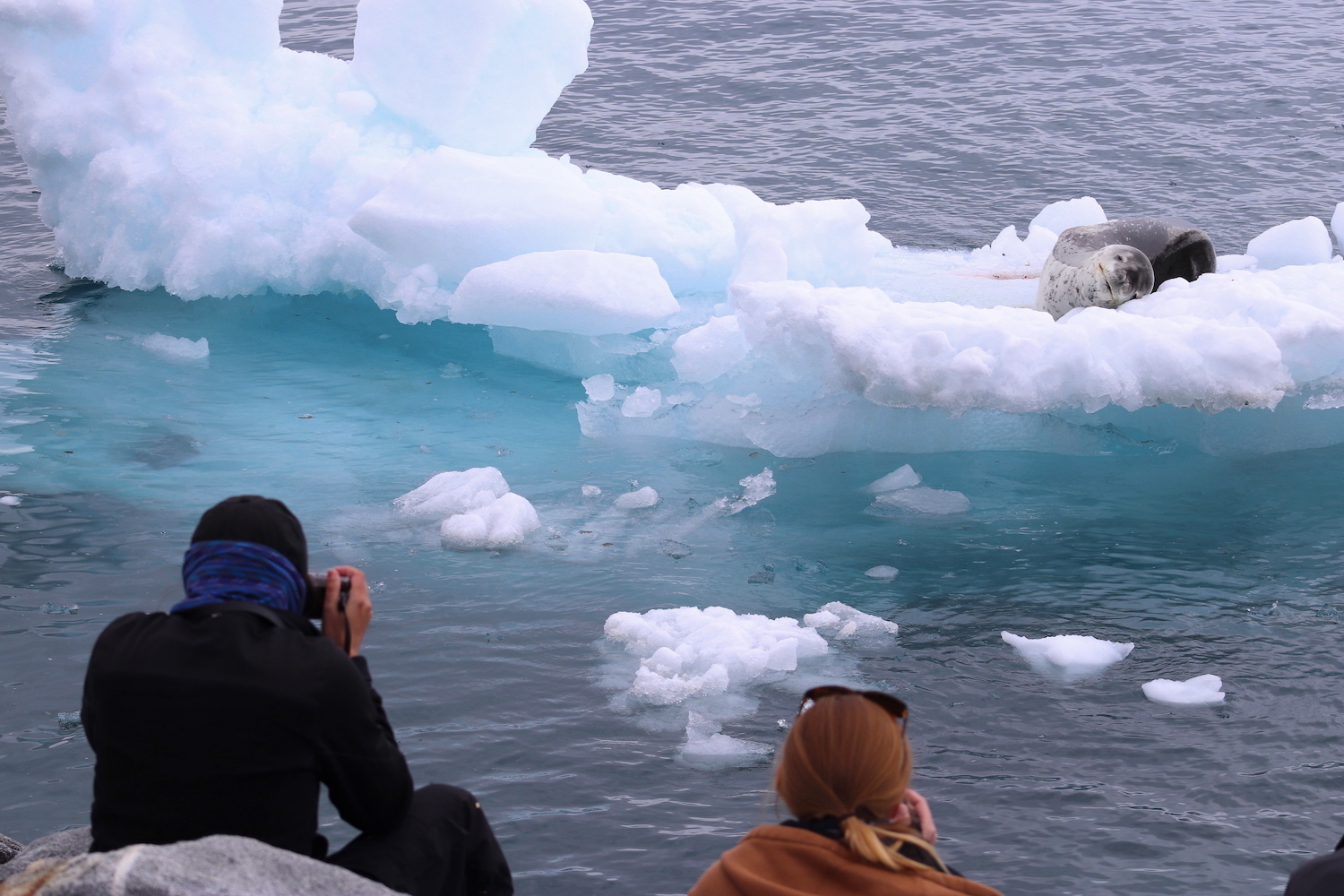Leopard seals:
A few days ago, on December 31, we had the rare opportunity to see not one, but two (!) leopard seals from our study site. These seals truly have perfected the art of dozing and relaxation, with the occasional yawns (left photo; thank you, Rich Harper, for letting me use your camera for these shots!).

Leopard seals are solitary animals, so it was interesting to see there was another individual on a nearby ice floe. The leopard seal is a very sleek animal, almost sinuous in form, and absolutely deadly. It eats penguins and seal pups, but they have attacked humans also. However, and against all expectations, there is documentation of a female leopard seal engaging in friendly contact with a diver who was filming for the National Geographic.

Females are on average slightly larger (3 meters length) than males (2.8 meters). Aside from Orcas they have nothing to fear in the water. The waters are too cold for sharks. However, there are concerns that warming trends in Antarctica could make conditions more hospitable for sharks, which would result in dramatic changes to Antarctica’s marine ecosystem.
The sleep of one of the leopard seals was disturbed by hungry Snowy Sheathbills. Sheathbills could be considered the cleanup crew for when seals (or penguins) defecate, but they can also be annoying (i.e. pecking at the seal - which is not appreciated!).

The phrase, let sleeping dogs lie, is certainly true for dealing with Leopard seals. First, because they are very dangerous; and second, because the Antarctic Treaty prohibits humans from engaging with wildlife (i.e., do not get too close, and do not affect its natural behavior).
So in the photo below (thanks, Rebecca Trinh!), we are quietly settling in to take the amazing photos used in today’s blog from a safe distance. Yes, even sleeping leopard seals are a sight to behold!
